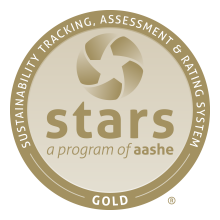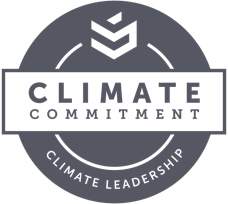California State University, Northridge has a bold vision for the future of our campus, and the community beyond. The University has pledged to achieve climate neutrality by the year 2040, and has implemented both a Climate Action Plan and Sustainability Plan to ensure that sustainability is achieved through planning and policy decisions, capital project development and campus operations.
CSUN's Climate Commitment
Soon after her arrival at CSUN, President Harrison, an early signatory of the American College and University Presidents’ Climate Commitment (ACUPCC) in her tenure at CSUMB, established sustainability as a priority for CSUN. On March 11, 2013, she signed the ACUPCC on behalf of CSUN, asserting that the university will exercise leadership by modeling ways to minimize greenhouse gas emissions and by educating graduates with knowledge that will help to achieve climate neutrality.
Second Nature Commitment (formerly ACUPCC)
Carbon Neutrality
As a part of CSUN's Climate Commitment the University developed a Climate Action Plan to achieve 1990 greenhouse gas levels by 2020 and net zero emissions (carbon neutrality) by 2040. This significantly exceeds the target set by the CSU Chancellor’s Office to reduce Scope 1 and 2 emissions to 80% below 1990 levels by 2040. This document defines a path to achieving these goals and describes the strategies which will be employed.
In meeting the goal to become carbon neutral by 2040, the following intermediate milestones have been established.
- Reduce commuting carbon footprint to below 1990 levels by 2020
- Reduce total GHG emissions to below 1990 levels by 2020
- Reduce Scope 1 and 2 GHG emission levels to 50% below 1990 levels by 2030
- Reduce Scope 1 and 2 GHG emission levels to 80% below 1990 levels by 2035
- Reduce Scope 3 GHG emission levels to 50% below 1990 levels by 2035
CSUN Climate Neutrality Targets and Progress
Emission Scopes
Greenhouse gases are commonly measured in three different categories, or scopes, and each scope includes emissions from different sources.
Scope 1:
Emissions from sources that are owned or controlled by the university. These include onsite natural gas usage for heat and hot water, fleet fuels for vehicles and equipment, and refrigerants.
Scope 2:
Emissions resulting from the generation of electricity, steam or hot water purchased by the university.
Scope 3:
Emissions from sources not owned or directly controlled by the university, but related to university operations. This includes student and employee commuting and university-funded travel.
Resilience
The other aspect of CSUN's commitment to climate neutrality is a resilience assessment, which identifies the major climate-related hazards that could threaten the campus and community in the coming years. The assessment process was undertaken by a group of graduate Urban Planning students and engaged both campus and community stakeholders to design strategies that mitigate these hazards, making the region more resistant to the social, economic, and environmental impacts of climate change.
Climate Resilience in Urban Campuses+Communities









